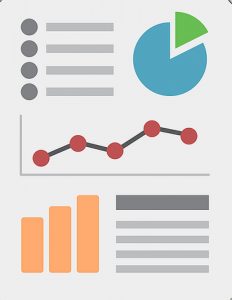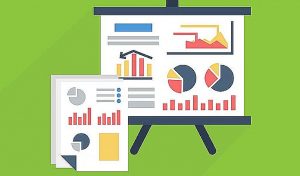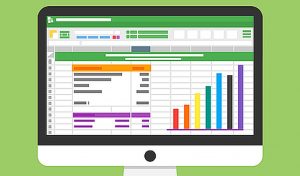Differences Between Data Science and Data Analytics: Data Science and Data Analytics have become industry buzzwords as a result of the rise of Big Data. The entire globe now contributes to tremendous data expansion in colossal proportions, thus the term “Big Data.” According to the Economist Intelligence Unit, worldwide data production will exceed 44 zettabytes per day by the close of 2020. By 2025, the total amount of data will be 463 exabytes!
Big Data encompasses everything we do online, including messages, emails, tweets, user queries (via search engines), social network activity, and data created by IoT and linked devices. Traditional data processing and analysis technologies are incapable of handling the massive amounts of data created every day by the digital world. This is where Data Science and Data Analytics come into play.
We commonly use Data Science and Analytics alternatively because Big Data, Data Science, and Data Analytics are all nascent technologies (and are continuously growing). The reality that Data Scientists and Data Analysts both work with Big Data adds to the misunderstanding. Despite this, the distinction between Data Analyst and Data Scientist is apparent, fueling the dispute between Data Science and Data Analytics.
The argument between Data Science and Data Analytics will be discussed in this essay, with an emphasis on the differences between Data Analyst and Data Scientist.

Data Analytics and Data Science are two sides of the same coin.
Big Data is approached differently by Data Science and Data Analytics. Both data analytics and data science are included in the phrase “data science.” Mathematics, Statistics, Computer Science, Information Science, Machine Learning, and Artificial Intelligence are all included in Data Science.

To identify patterns from complicated information and turn them into effective business strategies, it uses ideas including data mining, data inferences, prescriptive analytics, and machine learning algorithm development. Data analytics, on the other hand, is mostly concerned with Statistics, Mathematics, and Statistical Analysis.
While Data Science is concerned with discovering significant connections across huge datasets, Data Analytics is concerned with determining the details of extracted insights. To put it another way, Data Analytics is a subset of Data Science that emphasizes on providing more detailed answers to the issues that Data Science raises.
Data Science aims to find fresh and interesting issues that might help businesses innovate. Data analysis, on the other hand, tries to uncover answers to such questions and decide how they might be applied inside a company to promote information innovation.
Recommended: Best books for Programmers in 2022
Data Science vs. Data Analytics: Job Positions
Data Analysts and Scientists use data in various ways. Data Scientists clean, analyse, and evaluate data using a blend of mathematical, statistical, and machine learning approaches in order to extract insights. They use prototypes, machine learning techniques, predictive models, and specialized analyses to create sophisticated data modeling methods.

Data analysts gather huge amounts of data, arrange it, and evaluate it to uncover significant patterns, whereas data analysts evaluate data sets to detect trends and develop conclusions. They aim to show their findings using data visualization tools such as charts, graphs, and so on when the analytical phase is over. As a result, Data Analysts translate complicated findings into corporation language that both professional and non-technical employees can comprehend.
Both positions gather, clean, and analyze data in varied degrees in order to acquire actionable insights for data-driven decision making. Hence, the tasks of Data Scientists and Data Analysts typically overlap.
Also see: Best time to read and understand effectively
Responsibilities of Data Scientists
a. Data integrity must be processed, cleaned, and validated.
b. Exploratory Data Analysis on huge datasets is required.
c. ETL pipelines are used to execute data mining.
d. ML methods such as logistic regression, KNN, Random Forest, Decision Trees, and others are used to do statistical analysis.
e. To write automation code and create useful machine learning libraries.
f. Using machine learning techniques and algorithms to gain business insights.
g. In order to make business forecasts, new patterns in data must be identified.

Recommended: Best science courses to study in the university
Responsibilities of Data Analysts
a. To gather and analyze data.
b. To find interesting patterns in a dataset.
c. SQL is used to accomplish data querying.
d. To try out various analytical techniques such as predictive modeling, prescriptive analytics, descriptive analytics, and diagnostic analytics.
e. To show the extracted data using data visualization tools such as Tableau, IBM Cognos Analytics, and others.

Recommended: How to become a successful entrepreneur
Differences Between Data Science and Data Analytics
1. Big Data is addressed in both Data Science and Data Analytics, although in distinct ways. Both data analytics and data science are included in the broad phrase “data science.” Data Science encompasses a wide range of disciplines, including mathematics, statistics, computer science, information science, machine learning, and artificial intelligence.
Data mining, data inference, predictive modeling, and the development of machine learning algorithms are all used to find patterns in massive datasets and turn them into actionable business strategies. On the other hand, data analytics is primarily concerned with Statistics, Mathematics, and Statistical Analysis.
2. Data Analytics is aimed to reveal the particular of extracted insights, whereas Data Science focuses on uncovering significant correlations between vast datasets. To put it another way, Data Analytics is a subset of Data Science that focuses on more detailed solutions to the issues that Data Science raises.
3. Data Science strives to discover new and intriguing topics that can aid in business or company innovation. Data analysis, on the other hand, aims to find answers to these questions and determine how they might be implemented within a business to promote data-driven innovation.
4. Data scientists must be math and statistics experts with experience in programming (Python, R, SQL), predictive modeling, and machine learning. Data analysts must be knowledgeable in data mining, data modeling, data warehousing, data analysis, statistical analysis, database management, and visualization.
Problem solvers and critical thinkers are required of Data Scientists and Data Analysts.
5. Data analysts and data scientists use data in different ways. To clean, filter, and understand data, Data Scientists employ a combination of mathematical, statistical, and machine learning approaches. Prototypes, machine learning algorithms, predictive models, and custom analyses are used to create advanced data modeling procedures.
Data analysts collect huge amounts of data, arrange it, and analyze it to uncover significant patterns, while data analysts evaluate data sets to identify trends and draw conclusions. After the analysis is complete, they aim to convey their findings using data visualization techniques such as charts and graphs.
As a result, Data Analysts translate complex insights into business-savvy language that both technical and non-technical employees can grasp. Both positions collect, clean, and analyze data in varied degrees in order to gain actionable insights for data-driven decision making. As a result, Data Scientists and Data Analysts’ tasks frequently overlap.
Recommended: How To Become Good At Physics: 12 Effective Ways
Data Science vs Data Analytics: Core Skills
Data scientists must be math and statistics experts with experience in programming (Python, R, SQL), predictive modeling, and machine learning. Data analysts must be knowledgeable in data mining, data modeling, data warehousing, data analysis, statistical analysis, database management, and visualization. Problem solvers and critical thinkers are required of Data Scientists and Data Analysts.
A data analyst should be able to:
a. Excel and SQL databases are two of my strong suits.
b. SAS, Tableau, and Power BI, to mention a few, are all tools that you should be familiar with.
c. Programming skills in R or Python.
d. Data visualization is a strong suit of hers.
Recommended: Causes, Effects and Solutions to Low self-esteem
A Data Scientist must be:
a. Probability and Statistics, as well as Multivariate Calculus and Linear Algebra, are areas in which I excel.
b. R, Python, Java, Scala, Julia, SQL, and MATLAB programming skills.
c. Expert in database management, number crunching, and machine learning.
d. Extensive knowledge of Big Data platforms such as Apache Spark, Hadoop, and others.
Recommended: Differences between growth and development

Data Science vs. Data Analytics: Career Perspective
Data Science and Data Analytics have very similar professional paths. Aspirants to Data Science should have a solid educational background in Computer Science, Software Engineering, or Data Science. Similarly, Data Analysts can study Computer Science, Information Technology, Mathematics, or Statistics as an undergraduate degree.
Also see: Differences between Innovation and Change
Is Data Science or Data Analytic better?
Data scientists are often more technical, needing a mathematical mindset, whereas Data Analysts focus on statistics and analysis. A Data Analyst’s job is more of an entry-level position from a professional standpoint. Companies are looking for Data Analysts with a good expertise in statistics and programming.
Recruiters often prefer individuals with 2-5 years of industry experience when recruiting Data Analysts. Data Scientists, on the other hand, are seasoned specialists with more than 10 years of expertise.
Recommended: Most popular programming languages to learn
Data Science vs. Data Analytics: Which is Better?
With the use of insights gleaned from the company’s data, businesses are witnessing massive revenues and growth. This is the primary reason why the number of job openings for data scientists, data analysts, and data engineers has increased dramatically in every firm.
Every organization’s most important component is data. Data Science is effective for finding meaningful insights from raw and unstructured datasets. This field is concerned with locating answers to queries that the firm is unaware of. To achieve the answers, data scientists employ a variety of approaches and technologies.
Data Analytics takes accessible datasets and runs various statistical analyses on them to derive actionable insights. It aims to solve existing business challenges using the relevant data by displaying the data in a visual way that everyone can comprehend. Moreover, data analytics is concerned with producing insights that might bring instant benefits.
Data Science and Data Analytics are both in high demand in the industry. Both are excellent alternatives, whether you view at it from the perspective of breadth or compensation.
Recommended: Most difficult programming languages to learn
Conclusion
To summarize, while there are variations between Data Science and Data Analytics, they both follow similar paths. Data analysts and scientists are among the most sought for employment types in the business, as firms look to these individuals to help them navigate the road of technological transformation and remain competitive. And the decision between the two is primarily based on your own interests and professional objectives. It’s time to consider these job alternatives if you enjoy difficulties, are creative, and enjoy undertaking analysis and programming.

Edeh Samuel Chukwuemeka, ACMC, is a lawyer and a certified mediator/conciliator in Nigeria. He is also a developer with knowledge in various programming languages. Samuel is determined to leverage his skills in technology, SEO, and legal practice to revolutionize the legal profession worldwide by creating web and mobile applications that simplify legal research. Sam is also passionate about educating and providing valuable information to people.